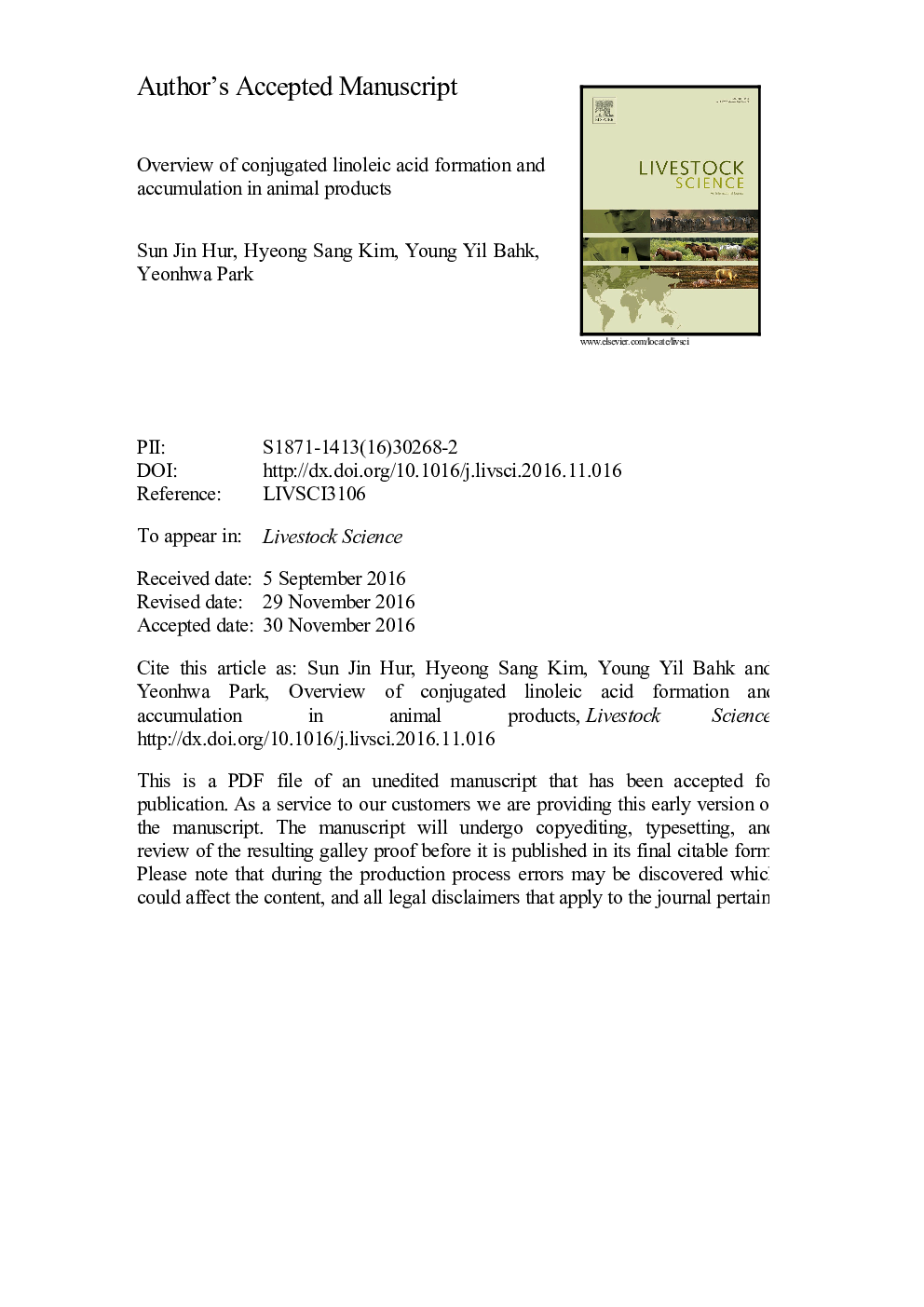| کد مقاله | کد نشریه | سال انتشار | مقاله انگلیسی | نسخه تمام متن |
|---|---|---|---|---|
| 5543155 | 1553937 | 2017 | 29 صفحه PDF | دانلود رایگان |
عنوان انگلیسی مقاله ISI
Overview of conjugated linoleic acid formation and accumulation in animal products
ترجمه فارسی عنوان
بررسی اکسایش و تجمع اسید لینولئیک در محصولات حیوانی
دانلود مقاله + سفارش ترجمه
دانلود مقاله ISI انگلیسی
رایگان برای ایرانیان
کلمات کلیدی
موضوعات مرتبط
علوم زیستی و بیوفناوری
علوم کشاورزی و بیولوژیک
علوم دامی و جانورشناسی
چکیده انگلیسی
In this review, we provide an overview of the methods used to enhance conjugate linoleic acid (CLA) in animal products and the mechanisms through which CLA is synthesized or accumulated in animal products. Linoleic acid is the key precursor of CLA; thus, CLA can be synthesized through conversion of linoleic acid by ruminal bacteria (Propionibacterium) and lactic acid bacteria (Lactobacillus, Lactococcus, and Streptococcus) with biohydrogenation. Accordingly, it is possible to increase the CLA concentrations in meat, milk, or eggs from animals through feeding of a polyunsaturated fatty acid-rich diet, e.g., a diet containing linoleic acid. Dietary green grass enhances the growth of specific rumen bacteria that are responsible for the synthesis of CLA in animals. CLA or linoleic acid intake increases CLA concentration in dairy products such as milk, cheese, and yogurt. In order to increase CLA status in humans, probiotic bacteria that can be used to convert dietary linoleic acid to CLA. However, it is unclear how much CLA needs to be consumed to have appropriate benefit on human health. Thus, future research is needed to establish methods for controlling the amounts of CLA and CLA isomers in animal products and to determine the exact mechanisms of CLA consumption on human health.
ناشر
Database: Elsevier - ScienceDirect (ساینس دایرکت)
Journal: Livestock Science - Volume 195, January 2017, Pages 105-111
Journal: Livestock Science - Volume 195, January 2017, Pages 105-111
نویسندگان
Sun Jin Hur, Hyeong Sang Kim, Young Yil Bahk, Yeonhwa Park,
